The genesis of Ghost Cat is quite personal and whimsical: it began with a ghost cat residing in my very own home. Or, at least, the perception of one. These weren’t full-blown apparitions, mind you, but rather fleeting shadows and blurs at the edge of my vision. While logic might suggest mundane explanations for these occurrences, the idea of a ghost cat was far more intriguing and, ultimately, inspiring.
 Ghost Cat Book Cover
Ghost Cat Book Cover
This notion of a spectral feline wasn’t entirely unfounded. Years ago, a black cat mysteriously appeared at our doorstep. Day after day, it graced our porch with its presence. My wife, Teri, with her compassionate heart, began feeding it. I jokingly cautioned her that such kindness would make the cat a permanent fixture. And, as predicted, it did. Initially an outdoor cat, it gradually transitioned to an indoor-outdoor companion, always welcome to roam but consistently choosing our home. For over a decade, this black cat was a beloved member of our family. Then, one day, his absence became noticeable. A search led me to the heartbreaking discovery of him passed away in our side yard.
This loss occurred during a particularly challenging time. My wife had been living with young-onset Alzheimer’s disease for five or six years. The weight of informing her about the cat’s passing was heavy, and the disease made it even more poignant. Each time I shared the news over the next few days, it was as if she was hearing it anew, the grief washing over her repeatedly. Eventually, the memory of our feline friend faded from her mind entirely.
Time moved forward, and about a year after our cat’s death, the demanding nature of caring for Teri led to the difficult decision to place her in an Adult Family Home. For seven years, I had been her primary caregiver, but the relentless progression of Alzheimer’s made it unsustainable to provide adequate care while also maintaining my livelihood and personal well-being. It was during this period of profound change and solitude, perhaps even before Teri moved, that the “ghost cat appearances” began. Suddenly living alone, without the constant responsibilities of caregiving, my awareness shifted, and these subtle visual anomalies became noticeable.
Initially, these sightings were more of a curious amusement. While I didn’t genuinely believe in a literal ghost cat, the persistent near-sightings sparked an idea. As a writer, the notion was too compelling to ignore. I felt compelled to write a story about it, though the narrative was still nebulous. Sharing early drafts with my critique group proved to be a turning point. Their encouraging reception and insightful suggestions fueled the project. After a year of revisions and refinements, they offered a profound observation: “Kevan, this is YOUR story.” Initially, I took this literally – I had, after all, written it. But their meaning was deeper. “No,” they clarified, “you have a ghost in YOUR house.”
This resonated deeply. Since Teri had moved into care, my house, and in a way, my life, felt haunted by absence and loss. This realization made it imperative to get the story right. I understood then the true heart of “Ghost Cat.” It wasn’t just about a spectral feline; it was a story about navigating loss, the delicate process of moving forward, and the possibility of finding love again while cherishing the love that came before.
Publisher’s Weekly beautifully captured this essence, stating, “The heart, it seems, has room for everyone we have ever loved.” This resonated as the core message of “Ghost Cat”.
Interestingly, “Ghost Cat” also marked a shift in my artistic process. For the first time in a while, I ventured back into traditional art mediums to create the illustrations. My previous books had been predominantly digital creations. Furthermore, the illustrative style of “Ghost Cat” represents a distinct departure from my earlier works, embracing a new visual language to tell this poignant story.
The development of the illustrations themselves was a journey. Let’s take a look at the evolution of a specific spread in the book.
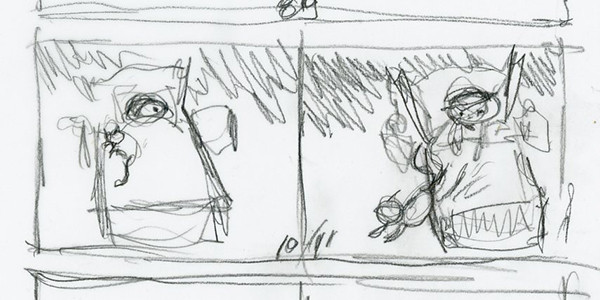 Initial Thumbnail for Spread 10-11
Initial Thumbnail for Spread 10-11
This initial thumbnail was just the starting point, a rough idea for the scene. From there, I moved to a more defined sketch.
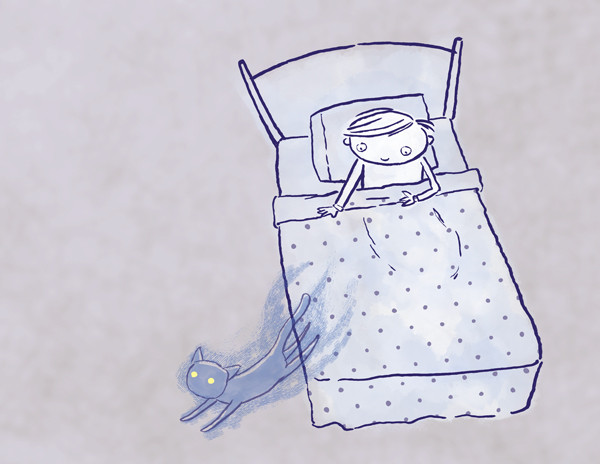 First Sketch for Page 11
First Sketch for Page 11
However, upon review, I realized a problem. Pages 10 and 11 felt too visually similar in composition. Beyond that, a crucial narrative point was being missed in the illustration: the boy in the story isn’t actually supposed to see the ghost cat. Yet, in the sketch, his gaze seemed directly focused on the feline.
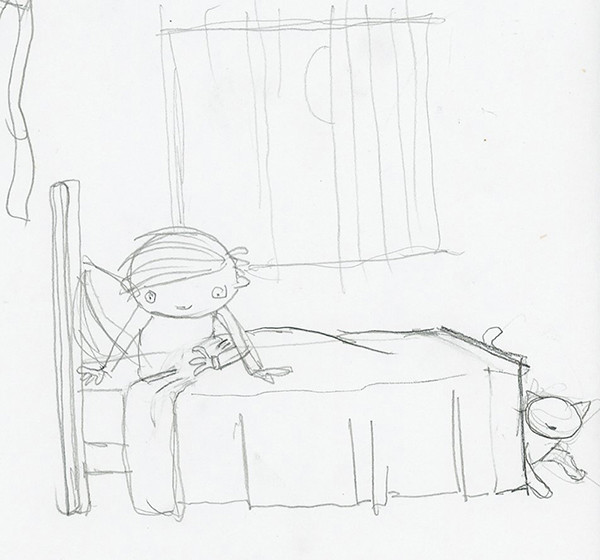 Revised Sketch for Page 11 – Profile View
Revised Sketch for Page 11 – Profile View
To address these issues, I decided to keep page 10 as it was but significantly alter the angle on page 11. By shifting the cat to a profile view, it moved out of the boy’s direct line of sight, reinforcing the idea that the ghost cat is unseen by the human character. This rough sketch reflects that key change. Next came refining the linework.
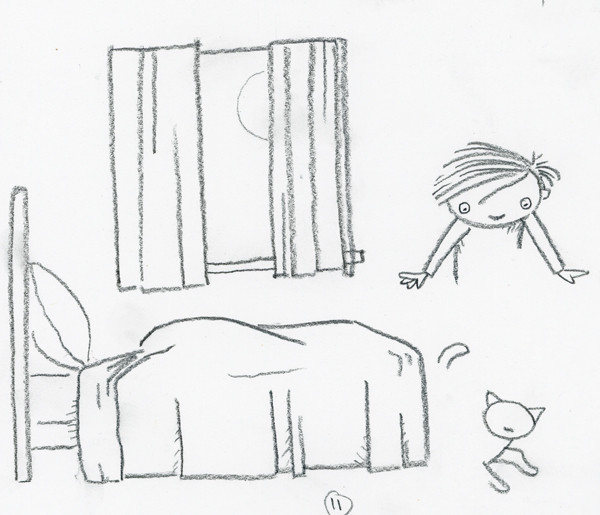 Final Pencil Work for Page 11
Final Pencil Work for Page 11
This image shows the final pencil work, meticulously cleaned up in Photoshop to create crisp lines ready for the coloring stage. The next step was to bring the illustration to life with color.
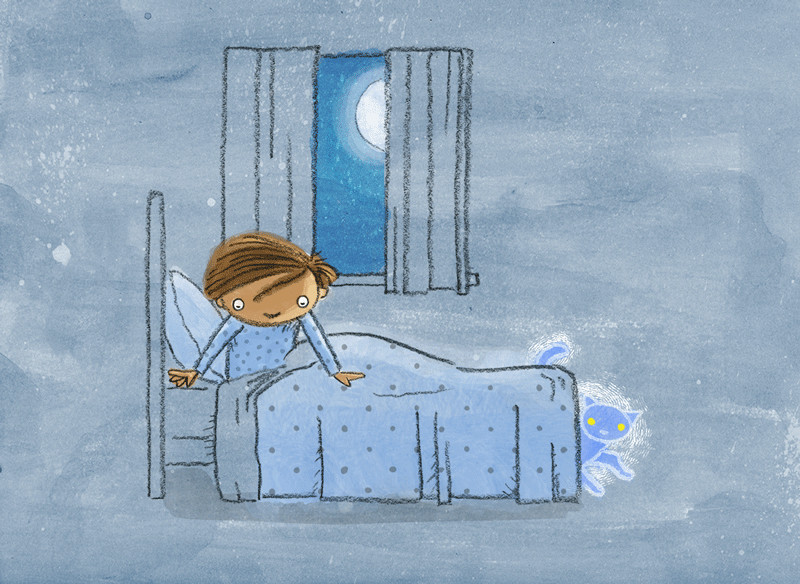 Final Illustration in Photoshop
Final Illustration in Photoshop
Using the pencil lines as a foundation, I then built up the final illustration in Photoshop, incorporating painted textures and carefully chosen colors to achieve the distinctive look of “Ghost Cat.”
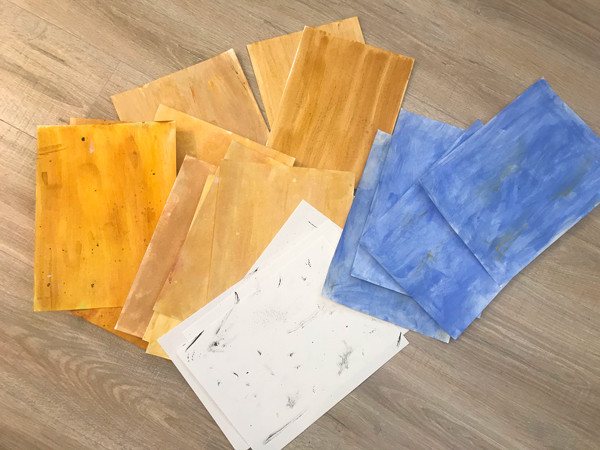 Uncorrected Colors and Textures
Uncorrected Colors and Textures
These uncorrected colors and textures represent the underlying palette used throughout most of “Ghost Cat,” contributing to its unique and evocative atmosphere.
Thank you, Kevan, for sharing the deeply personal story behind GHOST CAT. It’s a story that resonates with anyone who has experienced loss and rediscovered the enduring capacity of the heart to love.

